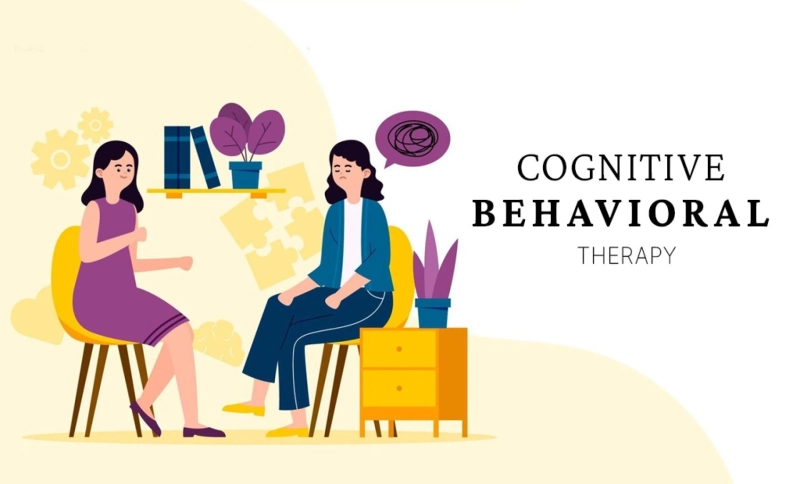Introduction:
Positive thinking is a powerful tool that can significantly impact emotional well-being and overall quality of life. Cognitive Behavioral Therapy (CBT) offers effective techniques to cultivate positive thinking patterns and shift perspectives. This comprehensive guide explores how CBT can help individuals develop a more positive mindset, foster resilience, and enhance their emotional health.
The Power of Positive Thinking:Positive thinking involves focusing on the bright side of life, embracing optimism, and seeking constructive solutions to challenges. It can lead to reduced stress, enhanced self-esteem, and improved coping skills. While it does not imply denying reality, positive thinking allows individuals to approach difficulties with a solution-oriented mindset.
The Basics of Cognitive Behavioral Therapy (CBT):Cognitive Behavioral Therapy is a therapeutic approach that addresses the relationship between thoughts, emotions, and behaviors. It emphasizes the importance of identifying and challenging negative thought patterns and replacing them with more balanced and positive thoughts.
Cognitive Restructuring for Positive Thinking:Cognitive restructuring is a central technique in CBT for positive thinking. It involves recognizing automatic negative thoughts (ANTs) and replacing them with realistic and constructive thoughts. By challenging cognitive distortions, individuals can cultivate a more positive outlook on life.
Developing a Growth Mindset:CBT encourages individuals to develop a growth mindset, as coined by psychologist Carol Dweck. A growth mindset involves believing in one's ability to learn and grow, even in the face of challenges or setbacks. Embracing a growth mindset fosters perseverance and a willingness to view failures as opportunities for growth.
Reframing Negative Experiences:In CBT, individuals learn to reframe negative experiences and view them from different perspectives. By looking for lessons or positive aspects in challenging situations, individuals can transform their outlook and find silver linings in adversity.
Practicing Gratitude:CBT often incorporates gratitude exercises to promote positive thinking. Gratitude journaling and focusing on what one is thankful for can shift attention away from negative thoughts and foster feelings of contentment and appreciation.
Setting Realistic and Positive Goals:Setting realistic and positive goals is a key component of CBT. By breaking down larger goals into smaller, achievable steps, individuals can maintain motivation and experience a sense of accomplishment, further reinforcing positive thinking.
Positive Self-Talk:CBT helps individuals become aware of their self-talk, the inner dialogue that shapes their thoughts and beliefs about themselves. Practicing positive self-talk involves replacing self-criticism and self-doubt with encouraging and compassionate thoughts.
Handling Cognitive Distortions:Cognitive distortions, such as all-or-nothing thinking, overgeneralization, and mental filtering, can hinder positive thinking. CBT equips individuals with strategies to identify and challenge these distortions, leading to more balanced and optimistic thoughts.
Mindfulness and Positive Thinking:Mindfulness practices, integrated with CBT, promote awareness of the present moment without judgment. By practicing mindfulness, individuals can reduce rumination on negative thoughts and enhance their ability to focus on positive aspects of life.
Positive Visualization:CBT incorporates positive visualization techniques, where individuals imagine themselves succeeding in various situations. This practice can boost self-confidence, increase motivation, and improve overall performance.
Cultivating Self-Compassion:CBT emphasizes the importance of self-compassion, treating oneself with kindness and understanding, especially during challenging times. Self-compassion fosters resilience and helps individuals bounce back from setbacks with a positive mindset.
Addressing Perfectionism:Perfectionism can be a barrier to positive thinking, as individuals may focus excessively on shortcomings or perceived failures. CBT helps individuals address perfectionism by promoting self-acceptance and embracing imperfections as part of the human experience.
Positive Relationships and Social Support:Building positive relationships and seeking social support contribute to a more positive outlook. CBT encourages individuals to surround themselves with supportive and uplifting individuals, enhancing their overall emotional well-being.
CBT for Depression and Negative Thinking:CBT is a well-established treatment for depression, which often involves negative thinking patterns. By challenging negative thoughts and learning positive coping strategies, individuals can alleviate symptoms of depression and improve their mood.
Applying Positive Thinking in Daily Life:CBT for positive thinking extends beyond therapy sessions; it involves integrating these techniques into daily life. Regular practice of positive thinking strategies enhances their effectiveness and creates lasting changes in perspective.
Combining CBT with Positive Psychology:Positive psychology, a field dedicated to studying human strengths and virtues, complements CBT's focus on positive thinking. Combining elements of positive psychology with CBT can further enhance well-being and resilience.
Positive Thinking in the Workplace:CBT for positive thinking is applicable in the workplace, promoting productivity, teamwork, and overall job satisfaction. By cultivating a positive work environment, employers and employees can experience increased motivation and engagement.
Overcoming Challenges in Adopting Positive Thinking:While CBT for positive thinking is highly effective, individuals may encounter challenges in adopting these practices. Overcoming negative thinking habits and building a positive mindset may require patience, consistent effort, and support from a therapist or support system.
Long-Term Benefits of Positive Thinking:The long-term benefits of positive thinking extend beyond emotional well-being. Positive individuals often experience improved physical health, stronger relationships, and increased opportunities for personal and professional growth.
Conclusion:
Cognitive Behavioral Therapy for positive thinking offers a transformative approach to enhance emotional well-being and resilience. By challenging negative thought patterns, embracing a growth mindset, and practicing gratitude and self-compassion, individuals can cultivate a positive outlook on life. CBT equips individuals with practical tools and techniques to overcome challenges, reduce stress, and improve overall quality of life. Adopting a positive thinking approach, both in therapy and daily life, can lead to lasting positive changes and empower individuals to navigate life's ups and downs with greater optimism and inner strength.



